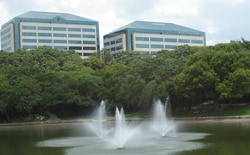Commercial Real Estate Agent
by Steve ShireTypes of Commercial Real Estate Agents
Lets look at commercial real estate agents in Austin. To do this we should define the difference between a commercial real estate agent versus a commercial real estate broker. An agent is sponsored by an agency or brokerage firm. They are licensed to practice real estate but not licensed to be on their own or employ other agents. For more information on an agent , you can always check with the Texas Real Estate Commission website.
On the flip side, a Commercial Real Estate Broker is defined as an individual who is licensed to practice on their own and own their own brokerage company. This may or may not have associates or other agents employed within their organization. There is also a phrase called a boutique brokerage firm which essentially describes a brokerage firm that is local or has regional expertise. Larger firms are brokerages that are nationally located or internationally located. There are also commercial real estate brokers who have affiliations with other brokers in the USA giving them a pseudo presence nationally in which they share leads or referrals nationally.
Specialists versus Generalists 
There are primarily 2 types of focus that exist with commercial real estate brokers or commercial real estate agents. These come under a generalist focus or a specialist focus. Let’s start with generalists, a generalist commercial real estate agent will focus on working in several different properties.
Generalists may do retail , industrial and office . The commercial real estate brokers who specialize will focus on one or two primary industries such as Shire Commercial. We focus on office space and warehouse space in Austin. What is the advantage to you? Well, you know the saying you cannot be an expert on everything, that is true. Each type of commercial real estate transaction has some similarities and some differences. The needs of the tenant , buyer or investor will be different for each as well.
How to work with a Commercial Real Estate Brokerage
Any good , professional and reliable commercial real estate brokerage firm will typically require some type of agreement in place. I know, for some when they hear agreement it makes them shudder. It should not make you feel so, why? For Buyers and Tenants, a commercial real estate representation agreement as it is called covers you and tells you how the commercial real estate broker will protect your interests. It also provides details on what their fiduciary responsibility is to you. No agreement in writing causes miscommunications and perceptions.
At minimum, by law it is required that any client receive the document entitled “Information About Brokerage Services”. This document explains what a consumer – client should do if they are to engage with an agent from regarding commercial real estate. If this is not given to you during your first substantive call, then a law is being broken.
A good agreement will have an out for you, if you are not happy with the results, then you should be able to cancel the agreement. The commercial real estate agent or commercial real estate broker should be able to cancel the agreement as well if they find that they cannot help you. Some deals cannot be done, it is just they way business is at times and it can be due to many factors.
LEED Certified Building
by Steve ShireSummary article from Tierra Grande – October 2013 issue.
LEED CERTIFIED BUILDING – Using Green Architecture
Is LEED certified building construction the standard for new development? There was a perception that a green building with LEED certified standards were too expensive to develop in the past . Typically the LEED building or green building costs about 1.5 times the normal cost of a non green building. It takes approximately 3 to 5 years to recoup the costs to construct a green building.
Initially, there was a lot of apprehension for the development of LEED certified buildings until Hines Development out of Houston, Texas decided to announce they would develop all of their projects as green or LEED certified buildings from now on. Once a major developer like Hines took the lead, the rest of the developers started to follow. Hines and JP Morgan Asset Management announced the construction of a 415,000 square foot “Net-Zero” building.
NET ZERO OFFICE SPACE
Net Zero is defined as an commercial real estate property that will create as much energy as it consumes. Net Zero office buildings use on site fuel cells using solar thermal energy that will generate more electricity than the building will use during the year. This energy management system takes the surplus electricity which is then fed back into the grid and credited against the office spaces and building energy charges.
Commercial real estate particularly the office and retail sectors are adopting the LEED certified or green type buildings. Despite the higher costs, owners and tenants are reaping rewards the rewards in the form of lower vacancies, attracting young talent and higher resale values of the commercial real estate property in the future.
SUSTAINABLE BUILDING
Estimated return on investment for the fuel cells from Hines is approximately five to six years. The office building to be built in California will also qualify for financial incentives offered by the California Public Utility Commission. The office property will also incorporate a number of energy management system design features such as under floor air distribution, efficient water chilled usage, triple pane windows and state of the art controls in place.
Once the Net Zero office project is completed, Hines plans to implement what is learned from their project in San Diego to existing office buildings and adapting LEED certified building standards.
Austin TX Office Condo Conversions
by Steve Shire Austin , TX Office Condo Conversions
Austin , TX Office Condo Conversions
Converting to an Office Condo
An office building owner may find it a good idea to do an office condo conversion . Just like apartment conversions, the tenants can be given the right to purchase their offices. This will be prior to the office condo being offered to the general public for sale. It sets up as a strategic advantage for current tenants leasing the property.
Process of a Conversion
The office building owner can convert their suites to a condominium. After renovations and filing of condominium papers , they arrange financing. They can then promote the new office condo property and have subsequent closings. The office property can be subdivided into individual private office condo ownerships that include an interest in the common areas of the office property.
Common Area Maintenance with an Office Condo Conversion
Common areas are typically roof, elevators, hallways, restrooms, entry areas as well as utility and storage areas. The new owners formally tenants would form a condo owners association (COA) and assess dues. Dues will cover the maintenance of the common areas as well as taxes. The COA is responsible for principal, interest, property taxes and insurance and common area maintenance plus a proportionate share of the common area.
One problem that could arise is if an office condo owner lost their property or properties through a bankruptcy. This would mean the other office condo owners would have to meet the property’s taxes, maintenance and insurance liabilities. This issue could put a COA in jeopardy, so careful attention must be paid to all contingencies and provisions for this type of commercial real estate scenario.
Office space calculations
by Steve ShireOffice Space Calculations
When a business is looking for an office space in Austin, there are several determinations that need to be made. One of the most important ones is how much office do we really need? When leasing space in Austin it is important that your broker like Shire Commercial can detail the basic square footage and layout considerations for your new office. The following is a good guideline on how office space calculations work and the approximate square footage for each office space that should be considered when making your office space calculations.
First let’s start with executive office space in Austin , this would include a partner’s office , or standard office space. Keep in mind the square footage for each type of office space is an approximation and may change due to an individual’s preferences.
Executive Office
- CEO or Directors 300 square feet
- Partners 225 square feet
- Standard office 150 square feet
- Small office 120 square feet
As a tenant looks at the approximate numbers , of course you would take the number of people X each type of office = Total square footage required.
Cubicles
- Supervisor workstation 100 square feet

- Standard cubicle 48 square feet
- Small cubicle 25 square feet
Conference rooms are usually pretty important to most tenants , here is a run down of the square footage required for conference room areas.
Conference Room Space calculations
- Board room space 375 square feet
- Conference room standard 300 square feet
- Small meeting room 225 square feet
Reception and additional office space areas
- Large reception areas 500 square feet
- Small reception area 300 square feet
- Copy rooms or mail rooms 150 square feet
- Pantry -break room space 300 square feet
- Files – storage 375 square feet
There are always greys when it comes to figuring square footage for office space in Austin, however this is a good start. Shire Commercial specializes in helping tenants find, negotiate, strategize and close on leases for office property in the Austin area.
Google Fiber Austin Summary
by Steve ShireGoogle Fiber Austin Summary
Google fiber announced a roll out into the Austin area recently. In article published by the Austin business journal, Google Fiber has met up with some resistance regarding the use of utility poles owned by their competitor ATT. Google and ATT decided to work a deal outside the City Council of Austin. Currently ATT owns 20% of the utiltiy poles and there is a proposition in place called item 66 that would change the rules on allowing a broader range of telecom providers to use utility poles in the City of Austin’s right of way.
Labor unions have written the mayor and city council to delay or oppose a change to the city’ rules with regards to utility pole usage. The labor unions appear to have been written at the request of ATT. So this dispute is slowing implementation down on Google fiber for Austin.
Interesting links
Here are some interesting links for you! Enjoy your stay :)Pages
- 1031 Exchange in Texas
- Austin Commercial Real Estate Blog
- Austin Medical Office Space | For Lease
- Austin Office Space
- Austin, TX Office and Warehouse Lease Terms
- Austin, TX Office and Warehouse Space for Lease or Sale
- Austin, TX Office Condos For Sale
- Austin, TX Office Space
- Austin, TX Office Space and Warehouse Space Brokerage Services
- Austin, TX Office Space for Lease Listings
- Austin, TX Office Space Lease and Sublease
- Austin, TX Office Warehouse Property For Sale Services
- Broker Cost
- Cheap offices for Lease Austin
- Commercial Real Estate Glossary
- Contact Us
- Downtown Austin Office Space
- Location
- Round Rock office space
- Search
- Selling Commercial Property
- Shire Commercial Real Estate – Austin, TX | Commercial Real Estate Broker
- Sublease Office Space or Warehouse Space In Austin
- Texas Net Lease Listings
- Thank You
- Underwriting Commercial Properties
- Austin Buyer – Tenant Representation
- Client Success Stories
- Austin Office News Archive – Shire Commercial
- Austin TX Office Lease Rates
- Client Testimonials
